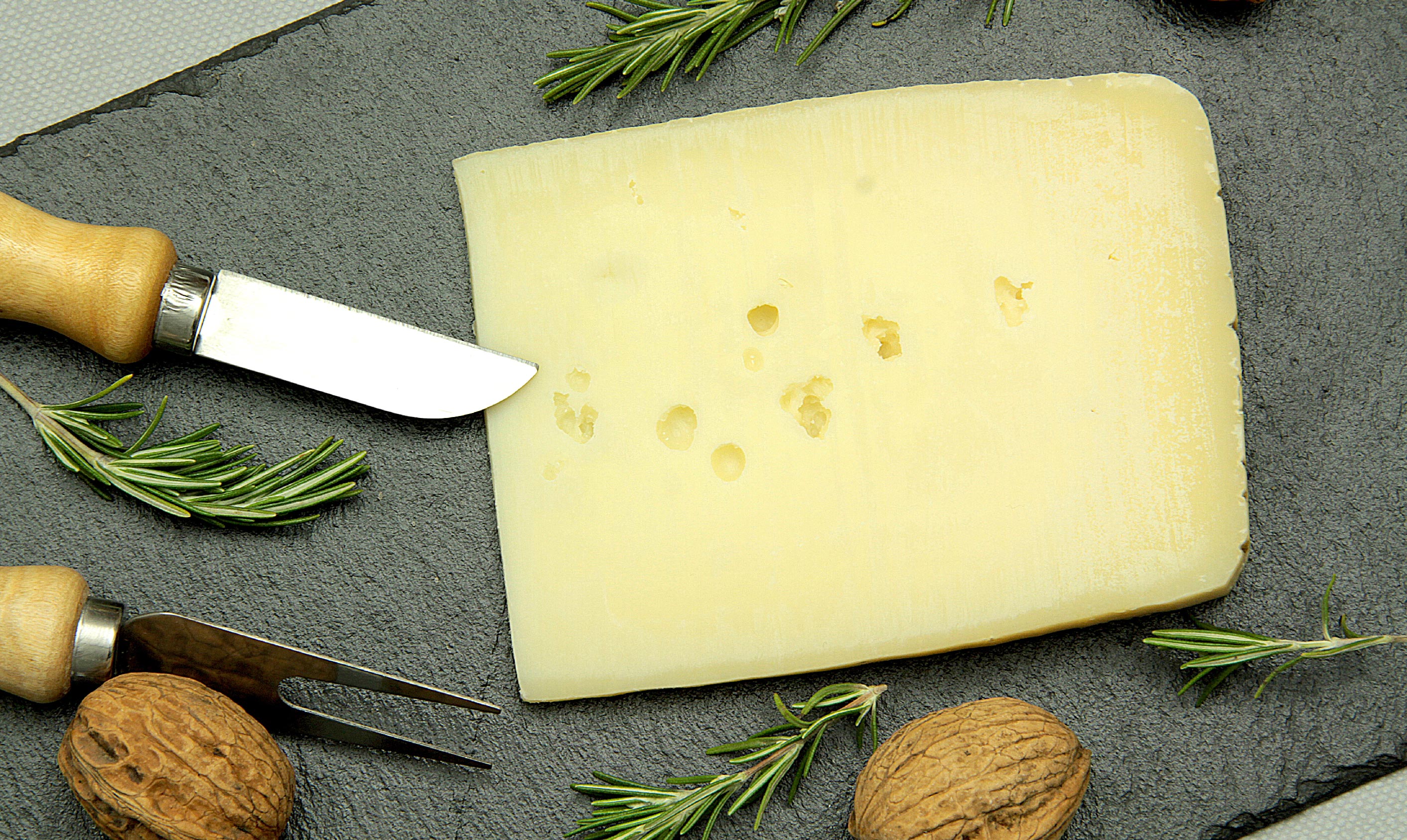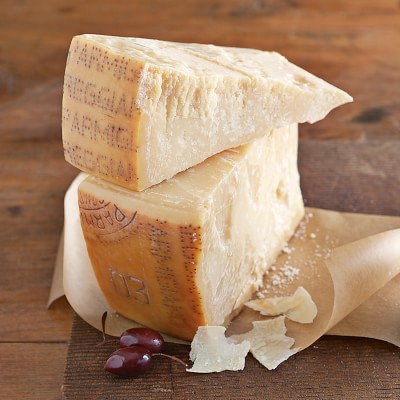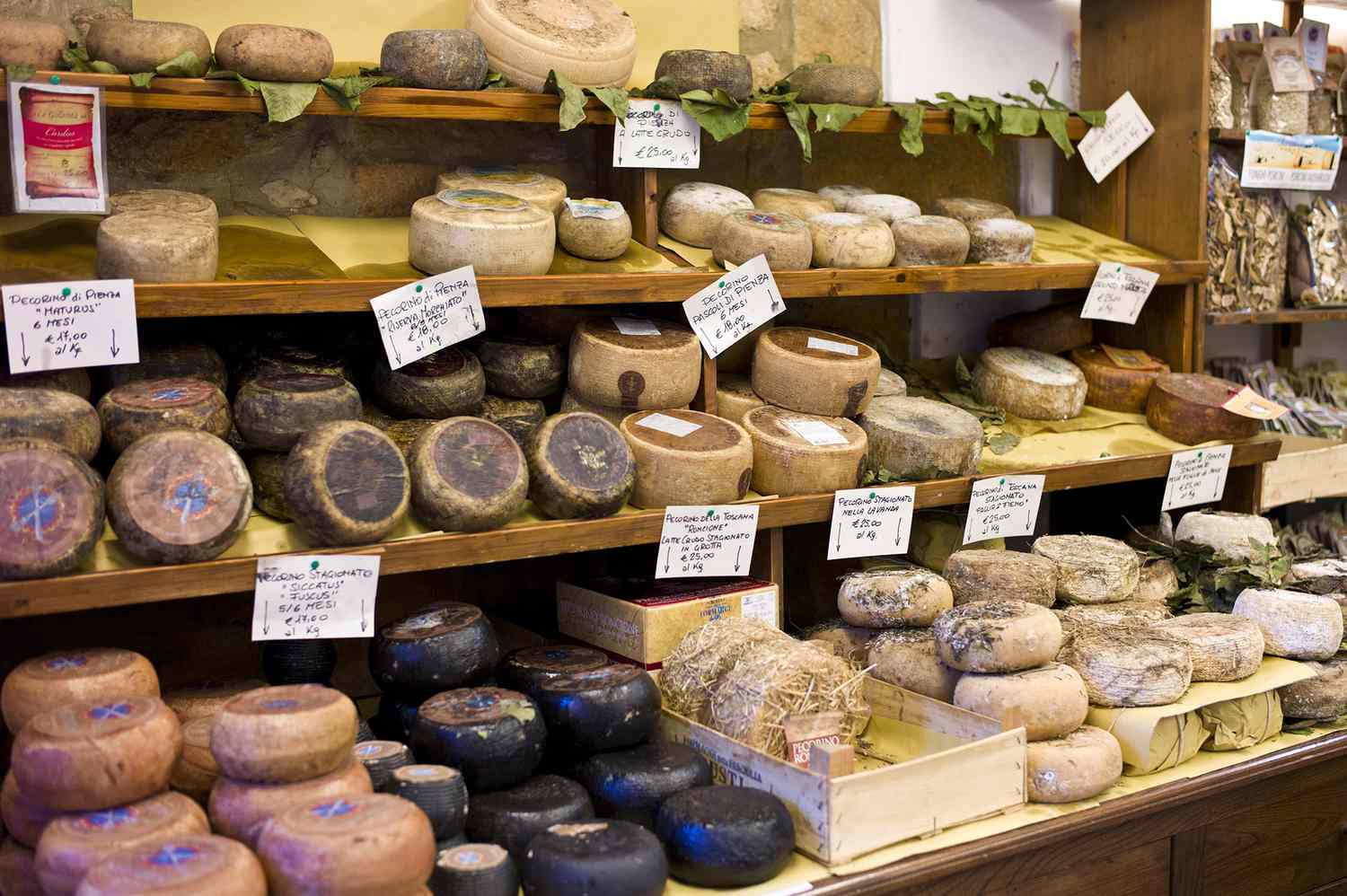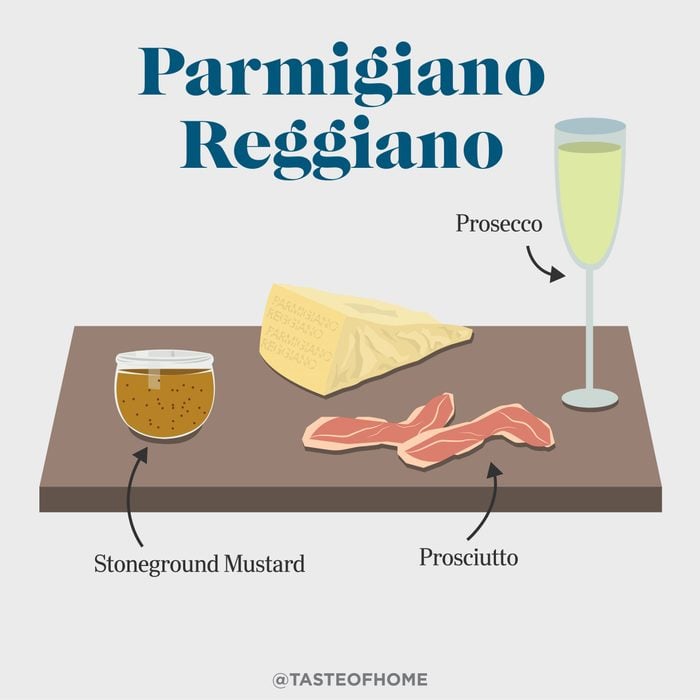Introduction

Welcome to the ultimate cheeseboard showdown between Asiago cheese and Parmesan cheese. Both these cheeses are renowned for their distinctive flavors and versatility in the culinary world. In this article, we will explore the taste, texture, and aging process of Asiago and Parmesan, as well as their nutritional profiles. We will also discuss the variations in flavor profiles and culinary uses, and provide recommendations for serving and pairing these delicious cheeses. So, join us as we compare Asiago and Parmesan and help you choose the perfect cheese for your cheeseboard.
Overview Of Asiago Cheese And Parmesan
Asiago cheese and Parmesan are two popular Italian cheeses known for their distinct flavors and textures. Asiago cheese is made from cow’s milk and has a slightly nutty and creamy taste. It is available in different varieties, ranging from semi-soft to aged, with the aged versions offering a sharper flavor. On the other hand, Parmesan cheese is made from cow’s milk and has a rich, savory taste. It is aged for a longer period, which gives it a hard and granular texture. Both cheeses are widely used in various culinary dishes and are prized for their unique characteristics and versatility.
Brief History And Origin Of Both Cheeses
Both Asiago cheese and Parmesan cheese have long histories dating back to ancient times. Asiago cheese originated in the Asiago Plateau region of northeastern Italy, where it has been produced for centuries. It was traditionally made by Alpine farmers using cow’s milk and was aged to preserve it for extended periods. Parmesan cheese, on the other hand, has its roots in the Parma region of Italy. It is believed to have been produced as early as the 13th century by Benedictine monks. Today, both cheeses are highly regarded for their craftsmanship and are cherished as culinary treasures in Italian cuisine.
Asiago Cheese

Asiago cheese is a flavorful Italian cheese that has gained popularity around the world. It is known for its rich and nutty taste, with a hint of sweetness. The texture of Asiago cheese can range from semi-soft to hard, depending on its age. Young Asiago cheese is smooth and creamy, while aged Asiago cheese develops a crumbly texture. This cheese is often used in cooking, as it melts beautifully and adds a savory depth of flavor to pasta dishes, salads, and sandwiches. Its versatility and distinct flavor make Asiago cheese a favorite among cheese enthusiasts.
Asiago Cheese: Taste And Texture
Asiago cheese offers a delightful combination of flavors and textures. Its taste is rich, nutty, and slightly sweet, with a hint of bitterness that adds complexity. The texture of Asiago cheese varies depending on its age. Young Asiago cheese is smooth and creamy, providing a luscious mouthfeel. As it ages, the cheese becomes firmer and develops a crumbly texture, adding a pleasant crunch to dishes. Whether enjoyed on its own or grated on pasta, pizza, or salad, Asiago cheese brings a unique and satisfying taste experience to any culinary creation.
Different Types And Aging Process Of Asiago Cheese
Asiago cheese comes in several different types that vary in flavor and texture. The most common types are Asiago Fresco, Asiago Mezzano, and Asiago Vecchio. As the names suggest, these cheeses differ in their aging process.
- Asiago Fresco: This is the youngest and mildest version of Asiago cheese, aged for about 20 to 40 days. It has a smooth and creamy texture with a delicate flavor.
- Asiago Mezzano: This medium-aged cheese is aged for approximately 3 to 5 months. It develops a slightly crumbly texture and a more pronounced nutty flavor.
- Asiago Vecchio: The longest aged variety, Asiago Vecchio is aged for over 10 months. It has a hard and crumbly texture, along with a sharp and robust flavor.
Each type of Asiago cheese offers a unique taste experience, allowing you to choose the one that suits your preference.
Parmesan Cheese

Flavor and consistency. Parmesan cheese, also known as Parmigiano Reggiano, offers a unique flavor and consistency. It has a sharp and robust taste with fruity and savory notes. The cheese has a granular texture, which becomes more pronounced as it ages. Parmesan cheese is well-regarded for its deep umami flavor, adding a rich and savory quality to dishes. Its distinct earthiness sets it apart from other cheeses. The aging process of Parmesan cheese, which can last up to 36 months, contributes to its complex and intense flavor profile.
Parmesan Cheese: Flavor And Consistency
Parmesan cheese, also known as Parmigiano Reggiano, offers a unique flavor and consistency. It has a sharp and robust taste with fruity and savory notes. The cheese has a granular texture, which becomes more pronounced as it ages. Parmesan cheese is well-regarded for its deep umami flavor, adding a rich and savory quality to dishes. Its distinct earthiness sets it apart from other cheeses. The aging process of Parmesan cheese, which can last up to 36 months, contributes to its complex and intense flavor profile.
Production Process And Aging Of Parmesan Cheese
Parmesan cheese is made from cow’s milk and follows a strict production process. First, the milk is heated and combined with rennet to form curd. The curd is then cut into small grains and cooked to release whey. The curd is then molded into large wheels and immersed in brine to enhance their flavor. After brining, the wheels are left to mature for a minimum of 12 months, but can be aged up to 36 months for a more intense flavor. During aging, the cheese develops its signature granular texture and complex flavor profile. The longer it ages, the stronger and nuttier the flavor becomes.
Differences Between Asiago And Parmesan

Asiago and Parmesan are both popular Italian cheeses, but they have distinct differences in taste, texture, and origin.
- Taste and Texture: Asiago cheese is slightly more buttery, creamy, and nutty than Parmesan. It also has a more pronounced bitterness, especially in the aged varieties like Asiago Stravecchio. In contrast, Parmesan is sharper, more robust, and has well-expressed fruity and savory notes, along with a distinct earthiness. Parmesan also has a stronger umami flavor.
- Aging Process: Asiago cheese is typically aged for around 3-6 months, while Parmesan goes through a longer aging process, ranging from 12 months to 36 months. This longer aging period contributes to the development of Parmesan’s complex flavor and granular texture.
- Production and Origin: Asiago cheese is produced in the Vicenza and Trento regions of Italy, while Parmesan is made in the Parma, Reggio Emilia, Modena, and Bologna regions. The production processes for both cheeses follow strict regulations to ensure their quality and authenticity.
In summary, while both Asiago and Parmesan are flavorful and versatile cheeses, they have distinct characteristics that set them apart. Understanding these differences can help you choose the right cheese for your culinary needs.
Asiago Vs Parmesan: Nutritional Comparison
When comparing the nutritional values of Asiago and Parmesan cheese, there are some notable differences. Parmesan cheese contains more protein, calcium, and phosphorus than Asiago cheese. It also has lower sodium and sugar content per serving. On the other hand, Asiago cheese tends to have fewer calories, total fat, and saturated fat compared to Parmesan cheese. These nutritional differences may be important factors to consider when choosing between Asiago and Parmesan for your dietary needs.
Variations In Flavor Profiles And Culinary Uses
Asiago and Parmesan cheeses offer distinct flavor profiles and are used in various culinary applications. Asiago cheese has a milder flavor with hints of sweetness and tanginess, making it versatile for both savory and sweet dishes. It can be grated over pasta, sprinkled on salads, melted in sandwiches, or enjoyed on its own. Parmesan cheese, on the other hand, has a bold and nutty flavor, making it perfect for adding depth to pasta sauces, soups, risottos, and gratins. It is commonly grated or shaved over dishes to enhance their flavors. Both cheeses are beloved by chefs and home cooks alike for their incredible taste and ability to elevate dishes.
Pairing And Serving

When it comes to pairing and serving Asiago and Parmesan cheeses, there are plenty of delicious options to consider.
For Asiago cheese, it pairs well with a wide range of ingredients and flavors. It can be enjoyed with fresh fruits like pears or apples, as well as with cured meats like prosciutto or salami. Asiago also complements roasted vegetables, such as zucchini or eggplant, and is a great addition to pasta dishes.
On the other hand, Parmesan cheese is a versatile cheese that enhances the flavors of many dishes. It can be grated over pasta, risottos, or soups to add a rich and savory taste. Parmesan also pairs well with balsamic vinegar, olive oil, and crusty bread, making it a perfect ingredient for a classic Caprese salad.
Whether you choose Asiago or Parmesan, these cheeses are sure to elevate your culinary creations and make any cheeseboard a delightful experience. So, go ahead and explore the amazing flavors and possibilities they offer.
Best Pairings For Asiago Cheese
Asiago cheese pairs beautifully with a variety of flavors and ingredients. Its nutty and slightly sweet taste makes it a versatile cheese to incorporate into your culinary creations. Here are some best pairings for Asiago cheese:
- Fruits: Pair Asiago with fresh fruits like pears, apples, or grapes for a delightful combination of sweet and savory flavors.
- Cured Meats: Sliced Asiago cheese complements cured meats such as prosciutto or salami, adding richness to charcuterie boards.
- Roasted Vegetables: Add grated Asiago cheese to roasted vegetables like zucchini or eggplant to elevate their flavors.
- Pasta Dishes: Sprinkle shredded or grated Asiago cheese over pasta dishes for a deliciously cheesy and comforting meal.
With its distinct flavor, Asiago cheese brings a delightful taste and texture to various dishes and cheeseboards. Remember to experiment and enjoy the endless pairing possibilities!
Recommended Serving Suggestions For Parmesan Cheese
Parmesan cheese is a versatile ingredient that can elevate a wide range of dishes. Here are some recommended serving suggestions for Parmesan cheese:
- Grated over pasta: Sprinkle freshly grated Parmesan cheese over your favorite pasta dish for a rich and savory flavor.
- Shaved on salads: Use a vegetable peeler to shave thin slices of Parmesan cheese onto salads, adding a salty and nutty taste.
- Melted in soups: Add grated Parmesan cheese to soups like minestrone or tomato soup to enhance their creaminess and depth of flavor.
- Topped on pizza: Sprinkle shredded or grated Parmesan cheese on top of your pizza for an extra burst of flavor.
- Paired with fruits: Serve Parmesan cheese alongside fresh fruits like melon or figs for a delightful combination of sweet and salty flavors.
Remember to experiment and have fun exploring the many ways to enjoy Parmesan cheese in your culinary creations.
Conclusion

In conclusion, Asiago cheese and Parmesan each offer their own unique flavors and characteristics. Asiago cheese has a buttery and nutty taste with a pronounced bitterness, while Parmesan is sharper and more robust with fruity and savory notes. Both cheeses have their place on a cheeseboard, depending on the desired flavor profile. Whether you choose Asiago or Parmesan, you can be sure to elevate your dishes with the rich and savory taste of these beloved cheeses. So, next time you’re creating a cheeseboard, consider adding both Asiago and Parmesan for a delightful variety of flavors.
Final Thoughts On Asiago Vs Parmesan
In the battle between Asiago and Parmesan, both cheeses offer distinct flavors and characteristics that can elevate various dishes. Asiago cheese provides a buttery, nutty taste with a noticeable bitterness, while Parmesan brings a sharper, robust flavor with fruity and savory notes. Choosing between the two ultimately depends on personal preference and the desired flavor profile for your cheeseboard or recipe. Adding both Asiago and Parmesan to your cheeseboard can provide a delightful variety of flavors that will please any cheese lover. So, explore both cheeses and discover your favorite!
Choosing The Right Cheese For Your Cheeseboard
When it comes to creating a cheeseboard, choosing the right cheeses is essential for a delicious and well-balanced spread. When deciding between Asiago cheese and Parmesan, consider how their flavors will complement the other cheeses and accompaniments on your board. If you prefer a milder, buttery flavor, opt for Asiago. If you want a sharper and more robust taste, go for Parmesan. Both cheeses offer unique qualities that can enhance the overall experience of your cheeseboard. Remember to consider the preferences of your guests and the types of cheeses that pair well with your chosen accompaniments.
Frequently Asked Questions about Asiago Cheese vs Parmesan
Q: What is Asiago cheese?
A: Asiago cheese is a type of Italian cheese made from cow’s milk. It originated in the Asiago plateau region in northeastern Italy. It has a smooth texture and a mild to sharp flavor depending on its aging.
Q: What is Parmesan cheese?
A: Parmesan cheese, also known as Parmigiano-Reggiano, is a type of hard cheese that comes from Italy. It is made from cow’s milk and aged for a minimum of 12 months. Parmesan cheese is known for its distinctive nutty and salty flavor.
Q: Are Asiago and Parmesan cheeses similar?
A: While both Asiago and Parmesan cheeses are Italian in origin and made from cow’s milk, they have distinct differences in flavor, texture, and aging. Asiago has a milder taste and softer texture compared to the stronger and harder Parmesan.
Q: Can I use Asiago instead of Parmesan in recipes?
A: Yes, you can often substitute Asiago for Parmesan in recipes, depending on your personal preference. The milder flavor of Asiago may result in a less intense taste compared to Parmesan. However, keep in mind that the texture and melting properties of the cheeses may vary.
Q: What dishes can I use Asiago cheese in?
A: Asiago cheese is versatile and can be used in various dishes. It pairs well with salads, pasta, risotto, sandwiches, and soups. It can be grated or sliced and adds a creamy and mild flavor to your favorite recipes.
Q: What dishes can I use Parmesan cheese in?
A: Parmesan cheese is commonly used in Italian cuisine and is a staple in dishes such as pasta, pizzas, soups, and sauces like Alfredo sauce. It adds a rich and savory flavor to recipes and can be grated or shaved for use.
Q: How should I store Asiago and Parmesan cheeses?
A: Both Asiago and Parmesan cheeses should be stored in the refrigerator to maintain freshness and extend their shelf life. It is recommended to wrap them tightly in plastic wrap or store them in an airtight container to prevent them from drying out.
Q: Can I freeze Asiago and Parmesan cheeses?
A: It is not recommended to freeze Asiago or Parmesan cheeses as it may affect their texture and flavor. Freezing can cause both cheeses to become crumbly or lose their original taste. It’s best to consume them before their expiration dates.
Q: Are Asiago and Parmesan cheeses lactose-free?
A: Both Asiago and Parmesan cheeses are considered low in lactose compared to other dairy products. The aging process of these cheeses helps to break down lactose, making them more easily digestible for individuals with lactose intolerance. However, it is always advisable to check with a healthcare professional.
In summary, Asiago and Parmesan cheeses are both wonderful additions to a variety of dishes. While Asiago offers a milder flavor and softer texture, Parmesan is known for its strong nutty taste and hard texture. Feel free to experiment with both to find your favorite taste profile.

Kemah Cafe is a family-owned eatery that takes pride in offering a delightful array of Vietnamese, Chinese, and Thai dishes. Located at the heart of the community, Kemah Cafe has been serving up delicious Pho and other authentic Asian cuisine for many years. Founded with a passion for sharing the flavors of the East, Kemah Cafe has become a beloved culinary destination for locals and visitors alike. The warm and welcoming atmosphere of the cafe, combined with the tantalizing aromas of freshly prepared dishes, creates an unforgettable dining experience.